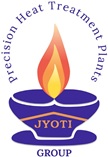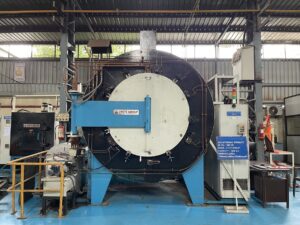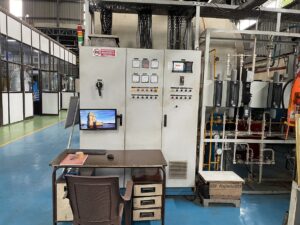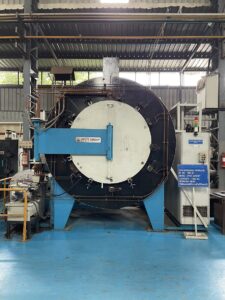Gas Nitriding is a heat treatment process used to harden the surface of steel and other alloys by diffusing nitrogen into the material’s surface. This process enhances wear resistance, fatigue strength, and corrosion resistance without altering the material’s core properties.
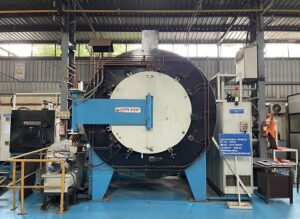 Key Features of Gas Nitriding
Key Features of Gas Nitriding
- Surface Hardening: The nitrogen reacts with elements like chromium, molybdenum, and aluminum in the steel to form nitrides, creating a hard surface layer.
- Low Temperature: The process typically occurs at temperatures between 500–580°C (932–1076°F), minimizing distortion of the part.
- Controlled Atmosphere: A nitrogen-rich gas, such as ammonia (NH₃), is used to provide a controlled nitriding environment.
Gas Nitriding Furnace Design
- Types:
- Batch Furnaces: Used for treating single or multiple components with uniform treatment.
- Continuous Furnaces: Suitable for high-volume production.
- Pit Furnaces: Used for treating long components like shafts.
- Key Components:
- Heating Elements: Electrically or gas-heated systems to maintain precise temperatures.
- Gas Control System: Regulates ammonia and nitrogen gas flow.
- Cooling System: Provides controlled cooling to avoid stress or distortion.
- Sealed Chamber: Ensures the process atmosphere is isolated from external air.
Gas Nitriding Process Steps
- Preparation:
- Cleaning the parts to remove contaminants.
- Polishing to ensure even nitrogen diffusion.
- Heating:
- The furnace is heated to the nitriding temperature.
- Ammonia gas is introduced, dissociating into nitrogen and hydrogen.
- Nitrogen Diffusion:
- Nitrogen atoms penetrate the steel surface, forming a hard nitrided layer.
- Time in the furnace determines the case depth (typically 0.1–0.7 mm).
- Cooling:
- Components are cooled slowly in a controlled environment to avoid cracks or distortions.
Applications of Gas Nitriding
- Automotive Industry: Gears, crankshafts, and camshafts.
- Tooling: Molds, dies, and cutting tools.
- Aerospace: Landing gear and turbine components.
- Industrial Machinery: Bearings, valves, and shafts.
If you’re interested in a specific furnace design or need guidance on operating parameters, Feel free to contact us..!
